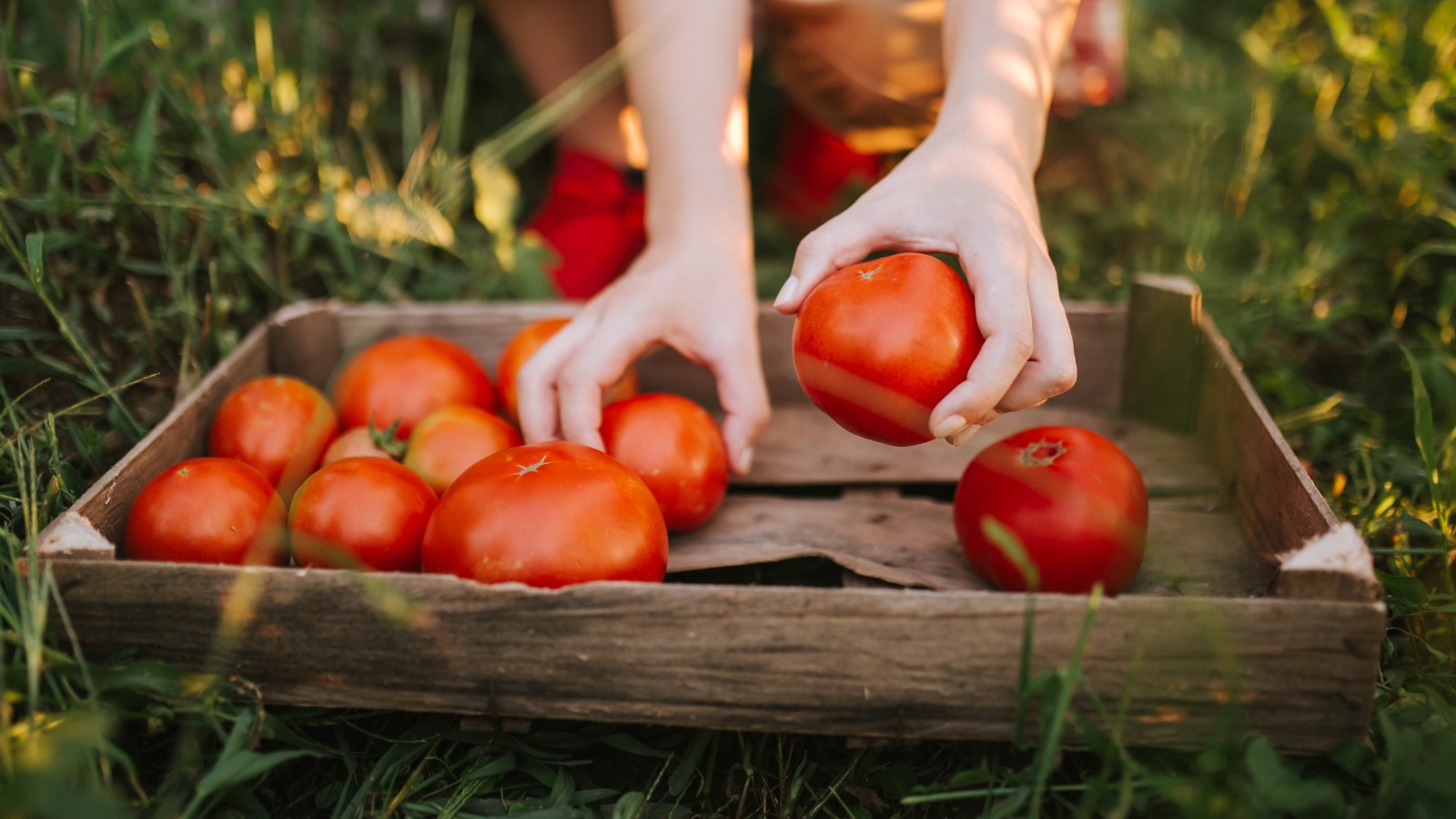
The correct application of tomato fertilizer will help you get strong and healthy plants, together with a bumper crop of tomatoes to enjoy all summer long.
Tomatoes are hungry crops that do require diligent watering and feeding throughout their growing season. There are different types of feed you can apply and you need to understand what nutrients are more important at different stages of a plant’s life cycle.
Growing tomatoes means maintaining a regular watering and fertilizing regime. As I learned during my time as a professional gardener, if you get it right you are rewarded with an abundance of juicy fruits for all your culinary needs. We take a look at when and how to fertilize tomatoes, and which fertilizers to choose.
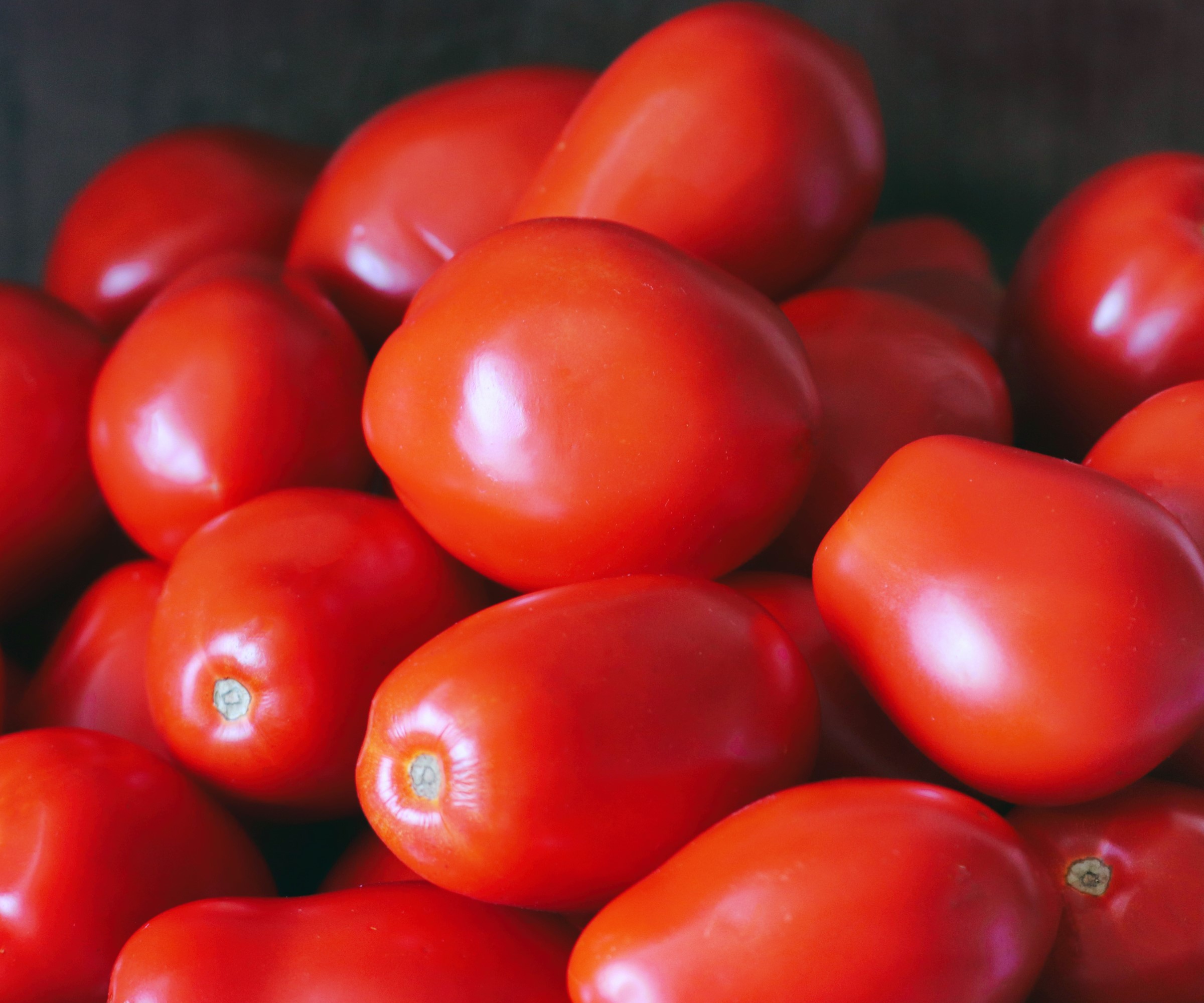
Benefits of fertilizing tomatoes
Tomatoes are heavy feeders and need fertilizer in order to grow and produce lots of fruit. Fertilizer is especially important if you are growing tomatoes in pots, as there is only a limited amount of resources available in the soil in the pot and it needs additional nutrients in order to give plants a constant supply. However, growing the the crop in any spot, including if you're growing tomatoes indoors, will require you to feed them as they grow.
A lack of nutrients throughout their growing season will mean the plants show signs of deficiency, including stunted growth or yellow tomato leaves, and they will struggle to give a good harvest of fruit. When it is time to harvest tomatoes, you can notice a lack of required nutrients by a lack of flowers and fruit and what is there may take longer to get to full size. Also, the lack of certain nutrients, such as calcium, can lead to blossom end rot on fruits.
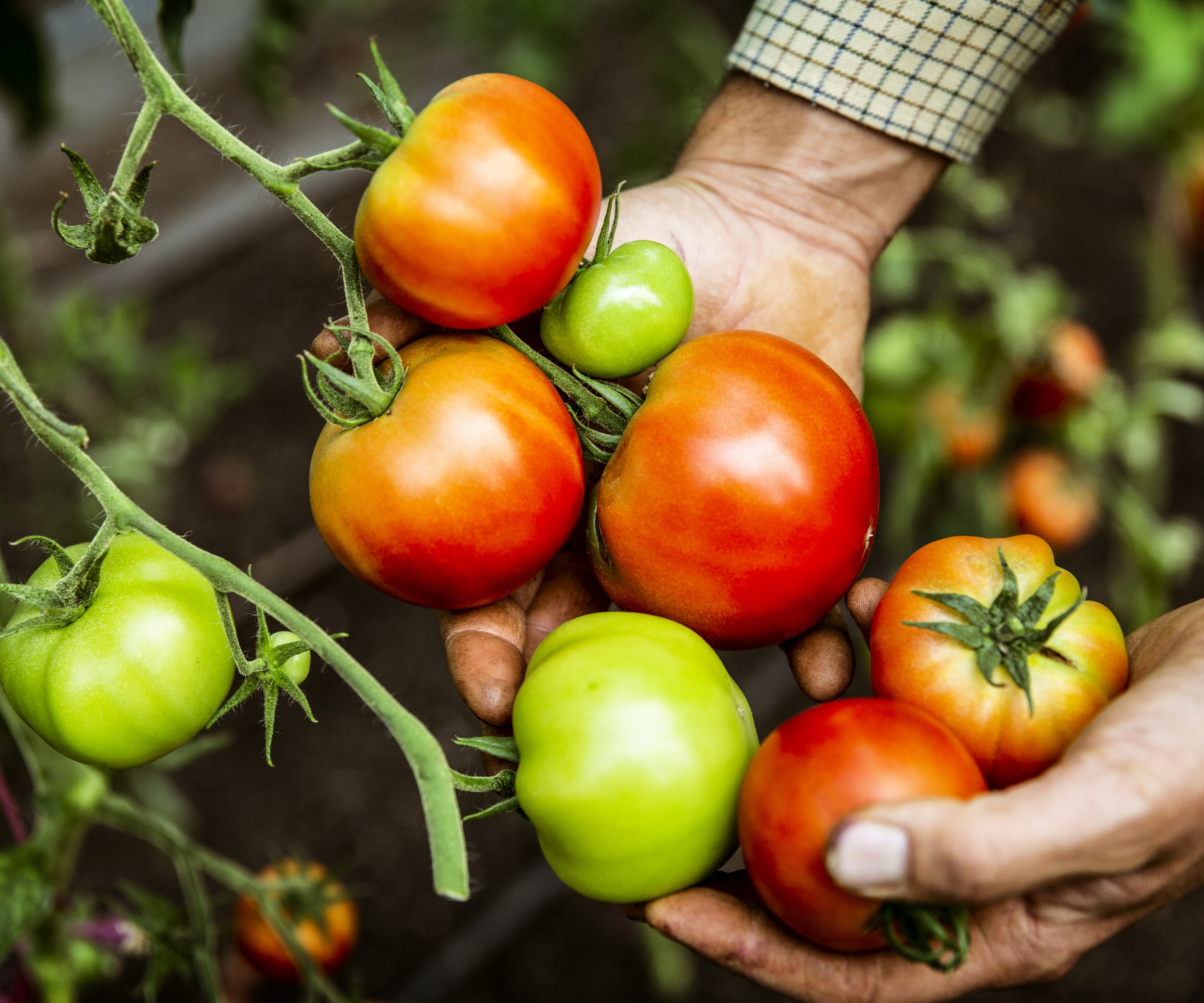
When to fertilize tomatoes
Tomatoes do not need any additional fertilizer during the early stages of their life-cycle, from sowing the seed to pricking out tomato seedlings and potting them on ready for planting in their final position.
There are two key windows when tomato plants need feeding, one comes when you plant tomatoes and then the other kicks-in just before the plants start to fruit. The first feed with a slow-release fertilizer can come at the time of planting, or a few weeks after, and then a more regular feeding regime comes into play to help the plants develop and ripen fruit.
Garden expert Christine Walkden says that ‘however you grow tomatoes’ they will hugely benefit from regular bouts of fertilizer in the summer. She adds: ‘Tomatoes benefit from feeding with a liquid tomato fertilizer, once the first truss of flowers has set. Follow the manufacturer’s instructions for feeding frequencies.’
Tomato fertilizer should be added every week or two throughout the flowering and fruiting season. This continues throughout the tomato harvest season and all the way until the last tomatoes on the plant have started to ripen.
How to fertilize tomatoes
When fertilizing tomatoes at the time of planting, place the chosen feed at the bottom of the planting hole. This feed can come in the form of homemade compost or well-rotted manure, or a manufactured slow-release fertilizer. Take care to ensure that any fertilizer does not come into direct contact with the roots of the plant.
During the flowering and fruiting season, tomato feed can come in granular or liquid form. The granular or pellet form of feed can be sprinkled on the compost around the plants. Care must be taken to avoid the feed touching the plant’s stem and any granular fertilizer must be watered in well after applying.
A liquid feed for tomatoes is mixed with water and applied to the soil when watering plants. It is recommended to only apply water and feed to the base of the plant and avoid watering from above and soaking the plant’s leaves.
When using any fertilizer, always apply at the rates recommended by the manufacturer. Adding too much tomato fertilizer can burn the plant’s roots, cause a nutrient imbalance, and potentially kill a plant.
Graham Rice, gardening expert for Homes & Gardens, claims that you actually have to ‘feed and water less for tastier tomatoes’ and giving the plant more fertilizer than it actually needs can impair the flavor of the fruit.
‘Flavor comes from three things: the varieties we choose, the way we grow the plants and the weather. Of course, we can’t control the weather, but we can control the other two,’ he adds.
‘As for growing, the thing to bear in mind is that generous watering and feeding is the enemy of good flavor. Give the plants enough, but no more. This may reduce the yield, but the taste will be enhanced.’
Whenever you do use tomato fertilizer, always water the plants before applying the feed. This can be done the day before, as the plants will take up the fertilizer much quicker if the soil is dry and faster than they ideally should.
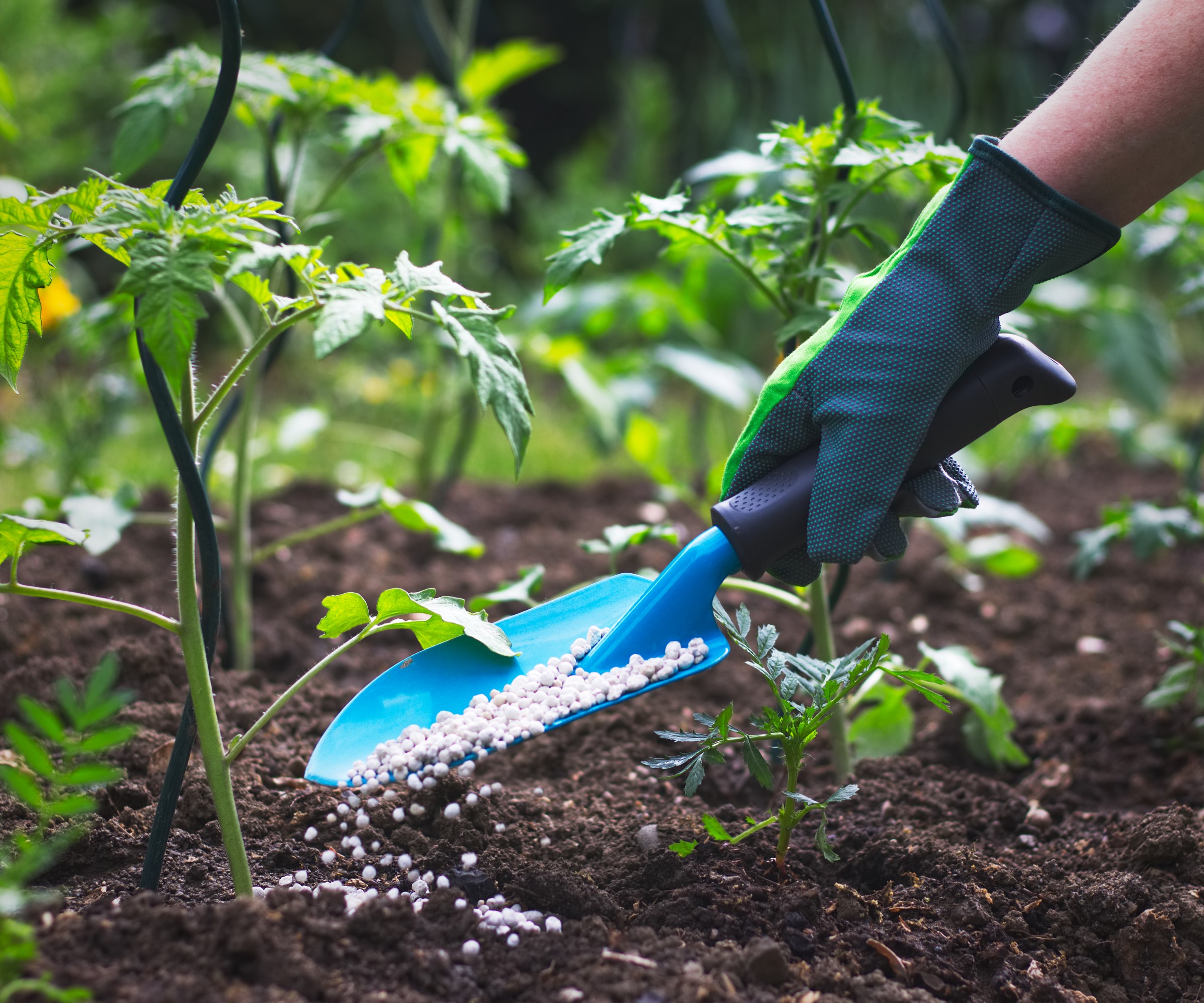
What is the best tomato fertilizer?
All plants need the main three nutrients of nitrogen, phosphorus, and potassium to grow into healthy specimens. These three nutrients are referred to as NPK and their make-up in any fertilizer is shown as three numbers separated by dashes on a plant fertilizer label, eg. 10-10-10. A tomato fertilizer will contain NPK as well as micronutrients that are also important to plant health.
Emily Jones, grower of tomatoes for over 30 years and founder of Tomato Mentor, recommends that the ‘best fertilizer for tomatoes is a well-balanced one’ that provides calcium and magnesium as well as NPK.
She adds: ‘Slow-release and liquid fertilizers are popular options. Organic fertilizers like compost, fish emulsion, and bone meal are also effective. Consider the specific needs of your plants and soil, and follow the manufacturer's instructions for application rates and frequency.’
The requirements of the tomato fertilizer differ during each of the application windows. At the time of planting, it is best to choose a balanced fertilizer where all three NPK numbers are the same, eg. 10-10-10 or 20-20-20. One example of such a balanced feed is the Expert Gardener All Purpose Plant Fertilizer available at Walmart.
When the flowers have started showing, then use a tomato fertilizer that is higher in phosphorus and potassium, as these nutrients will help to produce flowers and ripen fruit. A higher level of potassium is also regarded to make plants more resistant to diseases and also to tolerate stress. A good example is the Jack's Classic 12-15-30 Tomato Feed available at Amazon
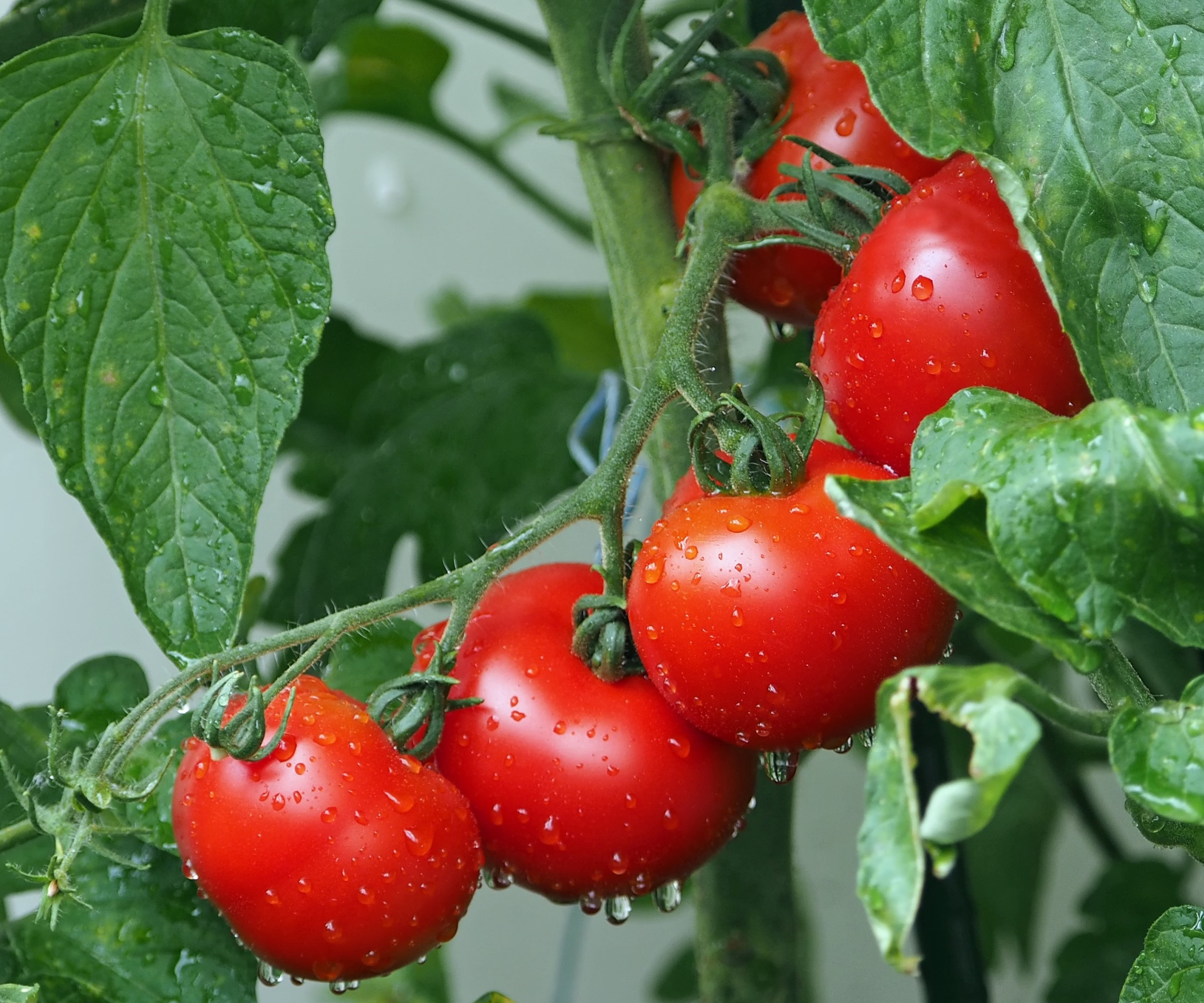
FAQs
Can you make homemade tomato fertilizer?
There are several options for making a homemade tomato fertilizer, this includes using homemade compost to feed the soil, adding wood ash to boost potassium, or using Epsom salt from the cupboard. However, possibly the best option is to make a liquid comfrey fertilizer that is rich in potassium and ideal for promoting flowers and fruits.
Is Miracle Gro good for tomatoes?
Miracle Gro produces dedicated tomato fertilizer products that are designed for keeping tomato plants healthy and producing fruit. This includes both granular and liquid-based tomato feed. For example, the 10-5-15 granular Miracle-Gro Shake 'N Feed Tomato, Fruit & Vegetable Plant Food available at Amazon or the Miracle-Gro LiquaFeed Tomato, Fruits & Vegetables Plant Food available at Walmart.
Is blood and bone good for tomatoes?
Blood and bone is a product that comes as a by-product of the meat industry and it is a common fertilizer that can be used for flowers, vegetables, trees, and lawns. Blood and bone contains nitrogen and is high in phosphorus. It is a product that is good for tomatoes and offers the advantage that it has good levels of calcium and can help to prevent blossom end rot of tomatoes. See an example of Hi-Yield Bone & Blood Meal available at Nature Hills.
Do tomatoes like manure?
Tomatoes like a rich soil to grow in and can benefit from the addition of well-rotted manure or compost into the area prior to planting. Manure has a wide range of nutrients that are released slowly to plants over an extended period of time. Any manure should be used sparingly and mixed with the soil, rather than just growing tomatoes in only manure. This is because manure does contain a lot of nitrogen and an over-abundance can lead to lots of foliage growth at the detriment to fruit and flower production. Any manure used in the garden needs to be well-rotted as fresh manure can burn a plant’s roots and ultimately cause them to die.
If you want the best tomato harvest possible, then never overlook the importance of tomato fertilizer. The majority of the feeding can be done alongside watering, so shouldn’t add lots of extra work, and the reward of extra delicious homegrown fruits in your vegetable garden will make it well worth it.







